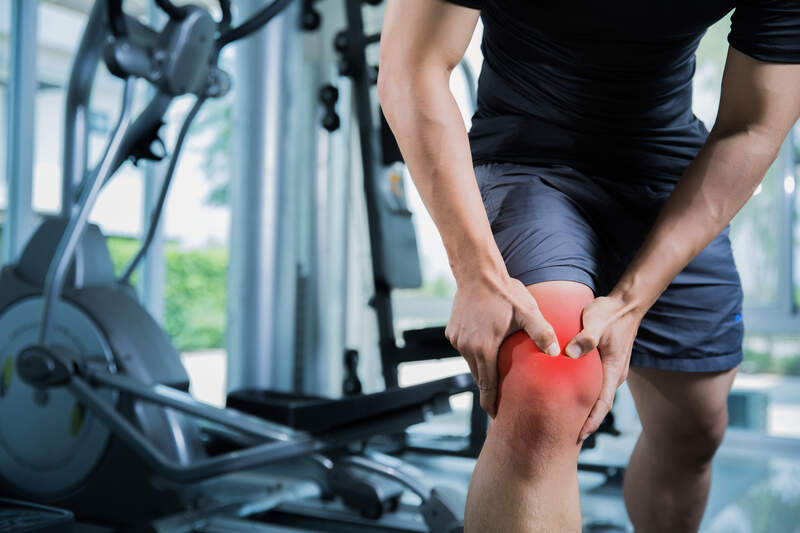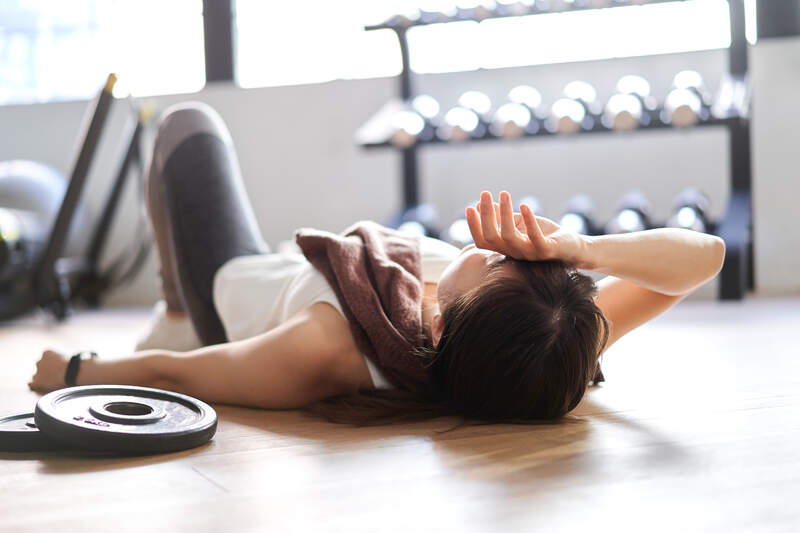What is inflammation and how do we manage it?
Inflammation is a part of our body's natural immune response and is crucial to healing. The right amount of inflammation, in brief, effective bursts, is good, but chronic inflammation can lead to disease like diabetes, arthritis, Crohn's disease, and other autoimmune issues. Too little inflammation (indicating a weak immune response) can lead to us getting sick, while an overly strong immune reaction can result in chronic inflammation and autoimmunity: the body is essentially fighting itself.

While inflammation is key to addressing things like injuries and illness, for the purposes of this article we're going to talk about inflammation in the primary context of exercise, activity or inactivity, and general lifestyle factors; it's important to know that any stress to the body — even “good” stress like exercise — creates inflammation. First, let's go over briefly what is happening in the body when inflammation occurs.
When you work out, you are creating damage in your muscles, often referred to as “micro tears.” This damage is actually something we're hoping will happen, so our immune response during recovery can build back the damaged muscle stronger. When this occurs, receptors at the “injured” site produce an inflammatory response, resulting in things like increased blood flow, redness, fluid buildup, and leukocytes (white blood cells) entering the area to help get rid of dead cells and make repairs. Your body will send signals to you via pain, reduced function, and soreness to discourage using the injured area while it's healing – although many of us will admit we've ignored those signals and worked out anyway, to our detriment.
The swollen and sore feelings we experience after a hard workout is our immune system's response to this damage we have created. This is why recovery after our workouts is so crucial. If we continue to create damage without adequate time for recovery, we are essentially breaking our body down, making it weaker and more prone to sickness and injury. Prolonged exercise-related inflammation can appear as fatigue and constant soreness, longer recovery time, plateaus in the gym and even muscle loss, as well as low motivation to work out.
When is inflammation good? When is it bad?
Acute inflammation (usually good) is the result of a specific event like a very tough hike, bike ride, workout, or even an injury, and it resolves relatively quickly (the pain and swelling go down, the soreness abates, etc). This can be anywhere from minutes to days, depending on the severity of the event.
Inflammation becomes chronic (this is bad) when the stress that creates it is not removed: a constant state of poor sleep, inflammatory foods, or intense, chronic activity with no recovery are all examples of this. Any activity — from sitting at a desk to repetitive movements at work to your favorite workout class — can induce chronic inflammation if you don't allow yourself recovery time, and if you're not balancing this activity with other healthy lifestyle factors including stress management, good nutrition, and sleep.
Research does seem to show that there is an ideal amount of activity and movement that optimizes immune function and response and helps us grow stronger and more resilient. It's not something many fitness enthusiasts want to hear, but too much exercise can be worse for our health than too little. Moderate-to-challenging exercise with appropriate rest and recovery between efforts can create the maximum benefit of our body's acute inflammation response, and what this means for most of us is that more is not always better. If we are feeling worn out, sore, and unmotivated to work out, those are strong signs from our body that we're overdoing it.
Managing and minimization inflammation
How do we know if we're working too hard, not recovering enough, and suffering from inflammation? Here are a few symptoms you may be experiencing, and chances are if you're experiencing a few of them at a time — or any of these on an ongoing basis — you may be dealing with chronic inflammation:
- Water retention (feeling or looking puffy)
- Red, sore, swollen, muscles that may even be warm to the touch as a result of increased blood flow
- Aching joints or extreme soreness that lasts more than a day or so after a workout
- Feeling sick or congested, like you have a mild cold, especially after hard workouts
- Reduced movement in the injured area (this can show up as sore muscles that don't have the same range without pain)
- Lower motivation and energy

It's not just working out that causes this, as we've discussed, but it's worth noting that even if you're moving and recovering appropriately, you may be experiencing inflammation from other factors in your life that could, in turn, be negatively impacting your health and performance in your workouts or hobbies. Some other key causes of inflammation include:
- Chronic stress
- Sickness
- Poor gut health
- Poor sleep
- Diets high in processed foods, seed oils, and sugar
- Smoking and drinking
Appropriately challenging exercise and optimal rest and recovery are key, including great sleep. The foods we eat can also help reduce inflammation and support our body's recovery processes. Healthy fats, protein, and vegetables should make up the base of your diet: think fatty fish and quality beef and eggs as well as fats like olive oil and avocado, and brightly colored, antioxidant rich fruits and vegetables like broccoli, berries, citrus, and dark leafy greens, as long as you digest and tolerate these foods well.
In summary: Inflammation can be both good and bad, and physical activity can both increase and decrease it. This can seem confusing, but the high-level answer is that everything — rest and inactivity, exercise and challenging movement, and inflammation — are helpful or hurtful depending on the dose, and our job is to find the right balance of both within the context of our lives. We can all work to reduce chronic inflammation by optimizing our sleep, diet, gut health, and recovery, while making the most of exercise-induced acute inflammation by fueling and recovering appropriately.
Resources:
Inflammatory Effects of High and Moderate Intensity Exercise—A Systematic Review
Inflammation Explained: Inflammatory Response with Dr. Landon Pryor